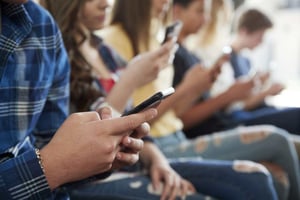In a world where first impressions matter and brand perception is everything, the strategic use of...
Human Creativity in the Age of Generative AI
We’re now living in an era where artificial intelligence can generate a logo, write a pitch, design a campaign, score music, or render cinematic visuals - often in seconds. What used to take teams of skilled professionals weeks or months to produce can now be mocked up by a machine in moments.
It’s impressive. It’s disruptive. It’s redefining how we work.
But it’s also prompting a deeper question for creatives, strategists, marketers, and storytellers alike: what does human-made mean now?
The Speed and Spectacle of AI
Generative AI tools are exploding in both accessibility and capability. From Midjourney and DALL·E to ChatGPT and Sora, we’re surrounded by platforms that can produce polished, engaging outputs at scale.
For businesses, this means faster content cycles. For creators, it means broader toolkits. For some, it’s exhilarating. For others, it’s unsettling.
Because when machines can generate almost anything, it’s tempting to wonder: what’s the role of the human creative?
What AI Can Do, and What It Can’t
AI is excellent at combining what’s already out there. It analyses patterns. It predicts outcomes. It reflects what it’s been trained on. This makes it a powerful assistant - it can help you go faster, ideate broadly, and fill in the blanks.
But it doesn’t originate in the way humans do. It doesn’t feel tension. It doesn’t live experience. It doesn’t take creative risks based on gut instinct, emotion, or cultural nuance.
And while AI can replicate tone, style, or format, it struggles to invent new ones. It builds with what’s known. It doesn’t have a point of view. And it doesn’t care if what it makes truly matters.
That’s where humans come in.
The Shift in Creative Value
If AI can handle the production side of creativity, templates, drafts, variations, then the value of human creativity shifts. It becomes less about output and more about insight. Less about making something pretty, more about making something meaningful.
What’s rare now isn’t slick design or polished copy. It’s original thinking. Strategic clarity. Emotional intelligence. Work that reflects lived experience, cultural context, or a distinct worldview.
Human creativity in 2025 isn’t about doing what the tools can do. It’s about doing what they can’t, and knowing how to use them wisely.
Human-Made Means Intentional
With so much AI-generated content everywhere, human-made work stands out because it’s intentional.
It’s not just a combination of prompts and settings - it’s the result of lived understanding. It carries nuance. It asks better questions. It makes sharper decisions. And while it might not always be faster or more efficient, it often resonates deeper.
Sometimes, human-made means embracing imperfection. A line that hits a nerve. A design that feels a bit off but somehow more memorable. A story that doesn’t follow structure, but sticks.
These are the moments where creativity becomes connection. Where it shifts from functional to emotional. And no matter how fast AI evolves, that kind of impact is still a human strength.
Collaboration Over Competition
This isn’t about either/or. The smartest creators today aren’t resisting AI, they’re collaborating with it. They’re using it to accelerate early-stage ideas, to explore possibilities, to generate variations that spark better choices.
But they’re also curating. Filtering. Choosing. They bring context, experience, and taste to the process. They know what to keep, what to discard, and what to push further. That’s where real creativity lives.
In this new era, success won’t be defined by how much you can produce, it will be defined by what you choose to share. What you stand for. What you say that no one else can say quite like you.
So What Now?
We’re not going back. Generative tools will keep getting faster, smarter, and more integrated into our creative workflows. And that’s not a threat, it’s a shift.
The job of the modern creative is no longer just to make. It’s to lead. To shape. To translate messy, complex, human ideas into work that means something.
In the age of generative everything, the most valuable skill is not what you can create - but what you can create that connects.
If you’re navigating creativity, messaging, or brand strategy in an AI-enabled world, and want help defining what still makes your work human - let’s chat.




